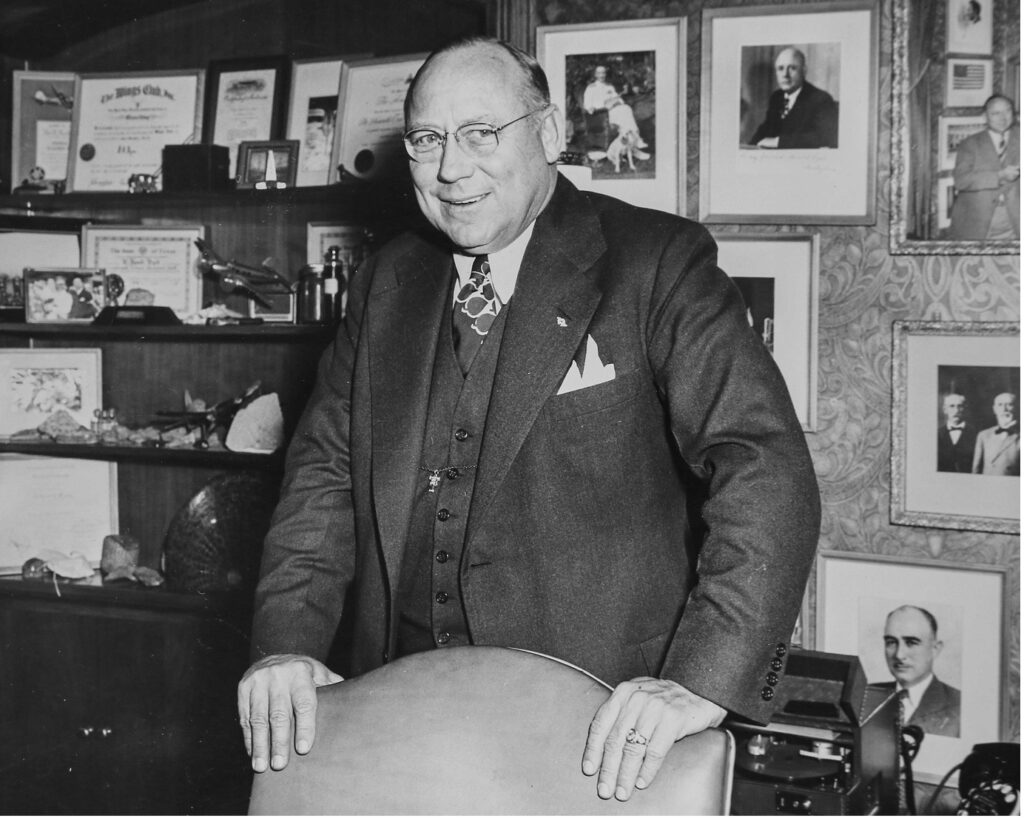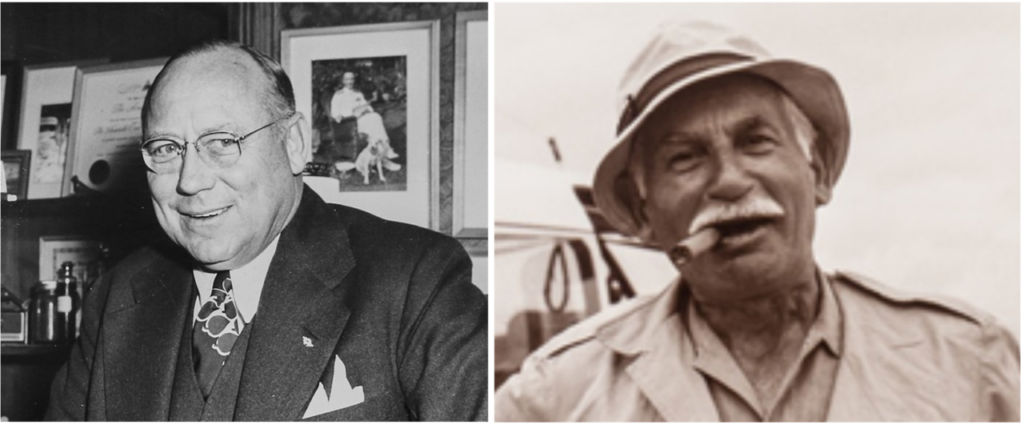
[This article is part of a special week of coverage on the continued mystery of the JFK assassination on the 62nd anniversary of the assassination.—Editors]
David Harold Byrd was the Texas oil millionaire who owned the building on Dealey Plaza rented by the Texas School Book Depository—the building that became notorious on November 22, 1963.
By Rob Smith – November 21, 2025
In all the investigation and speculation about how the alleged assassin, Lee Harvey Oswald, happened to get a job in this building that would soon overlook a motorcade route, there was little or no scrutiny of Byrd. This was partly because he was not Lee Oswald’s employer—his renter, the TSBD Company, was—and partly because he had put out the word that he was far away on safari in southern Africa in the weeks before and after the assassination.
But two years ago a striking finding was published. Byrd may not actually have been on that safari. Researchers unearthed an old photo, part of a collection snapped by the nephew of the safari camp’s German operator, that features the man who showed up at the remote safari camp claiming to be Byrd—and he bore little resemblance to the real Byrd.
The authors presented corroborating evidence as well that the so-called Byrd plus his companion were not whom they claimed to be.
To recap:
- The safari picture of “Byrd” shows a mustachioed, fairly fit, Mediterranean-looking man, whereas the real Byrd circa 1963 was rotund, clean-shaven, jowly, bespectacled, and seems different in the eyes, chin and cheekbones.[1]
- Byrd was supposedly accompanied on his hunting safari by Dr. Vanda Davidson, a leading Dallas gynecologist.[2] Yet Christian von Alvensleben, the young photographer who took the picture of the man claiming to be Byrd, says his companion called himself Thomas May (photos of whom also appear in von Alvensleben’s online gallery). No Dr. Davidson appeared.
- Another of the safari photos shows a dead elephant with these words painted on its huge ear: “Shot by Harold Byrd. 7 Dec. 1963.” Most hunters would pose for the picture with their trophy. It is hard to imagine why any hunter would paint his name on the carcass, then stay out of the picture, unless he was impersonating the person whose name he had painted.


Despite decades of JFK assassination research, it has been incredibly rare over the last 60 years to find a strong indication (such as Jean Souètre’s deportation from Dallas a few days after November 22) that a certain individual was directly involved in the Dallas plot.
The unraveling of Byrd’s exotic safari story is one such rare instance.
To law enforcement, a false alibi is one of the strongest indicators of guilt. The JFK research community should now pivot, or new researchers should step in, to pin down everything they can about Byrd’s actual whereabouts in late November 1963, plus anything else about him that might show means, motive and opportunity.
And interested politicians like Rep. Anna Paulina Luna (R-FL) and the House Oversight and Government Reform Task Force on the Declassification of Federal Secrets should be alerted to the Byrd issue.
